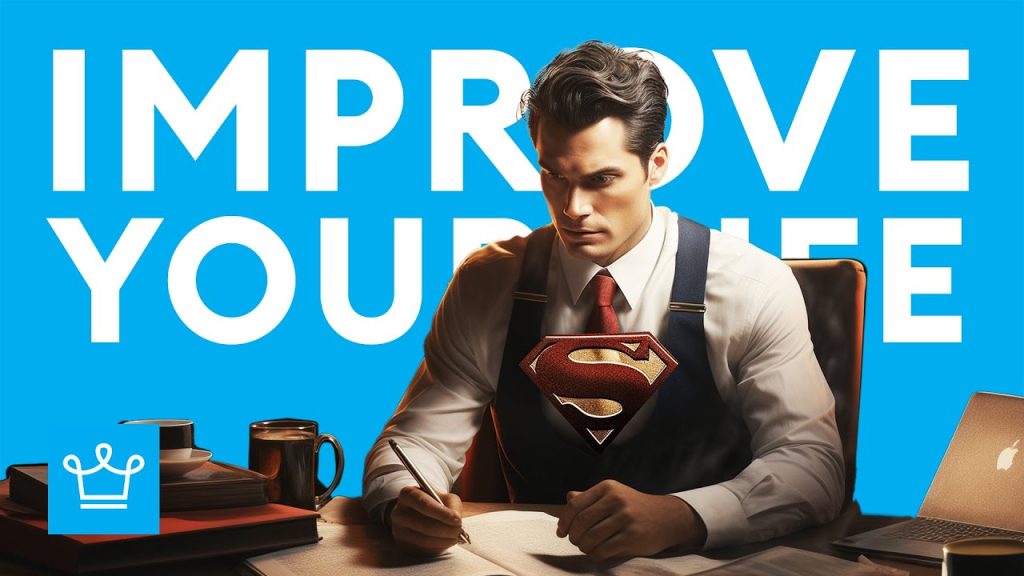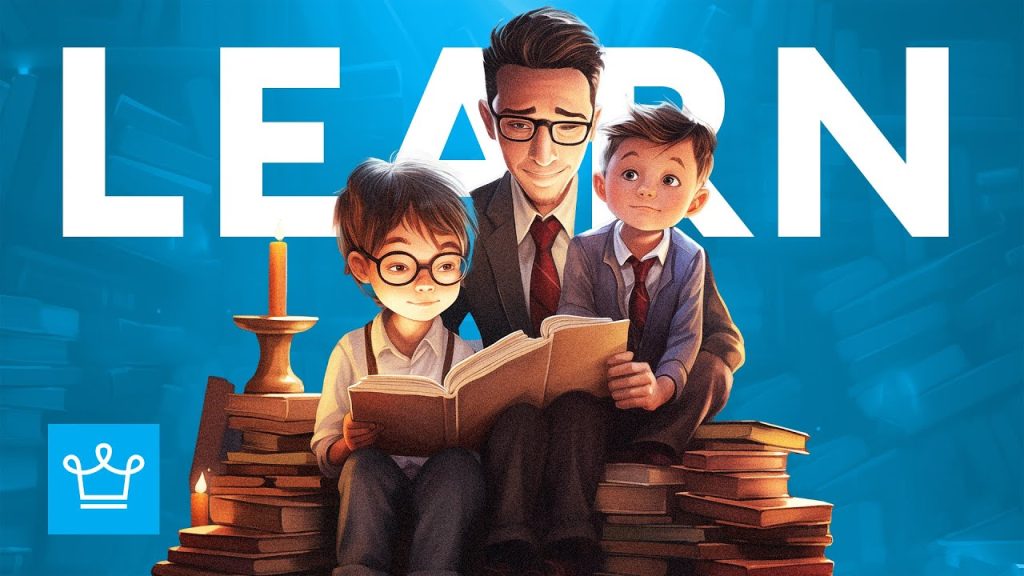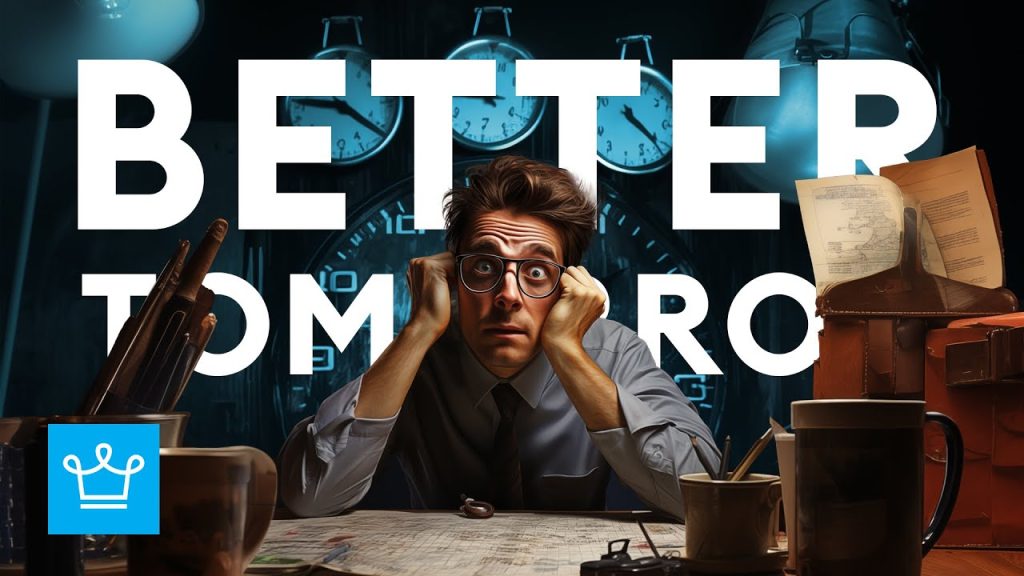These are the legendary deals that made history and billionaires in the process.
They say that if you want to go fast, you should go alone. But if you want to go far, you should pick great partners to share the journey with. That’s how these deals made billionaires from their participants.
The people on this list made insane fortunes because they chose the latter, and in this video, you will learn precisely how they did it.
Here are 15 deals that made billionaires.
Don’t worry if you don’t feel like reading, you can enjoy the video below or watch the video on YouTube:
1
Bill Gates and Paul Allen
Bill Gates and Paul Allen’s business relationship is a great example of how two people can work together to make a business work.
This dynamic duo, who met as students at Lakeside School in Seattle. And in 1975, they established Microsoft.
Together, Gates, a smart businessman, and Allen, a creative thinker with a knack for technology, made a company that would grow to change the way people use personal computers.
The group came together because they all wanted to put a computer on every desk and in every home. When mainframe computers were the rule, this goal seemed impossible.
Microsoft’s big break came when IBM agreed to license MS-DOS in 1981. This deal made Microsoft the best at what it does.
But there were good times and bad times in the way Gates and Allen got along.
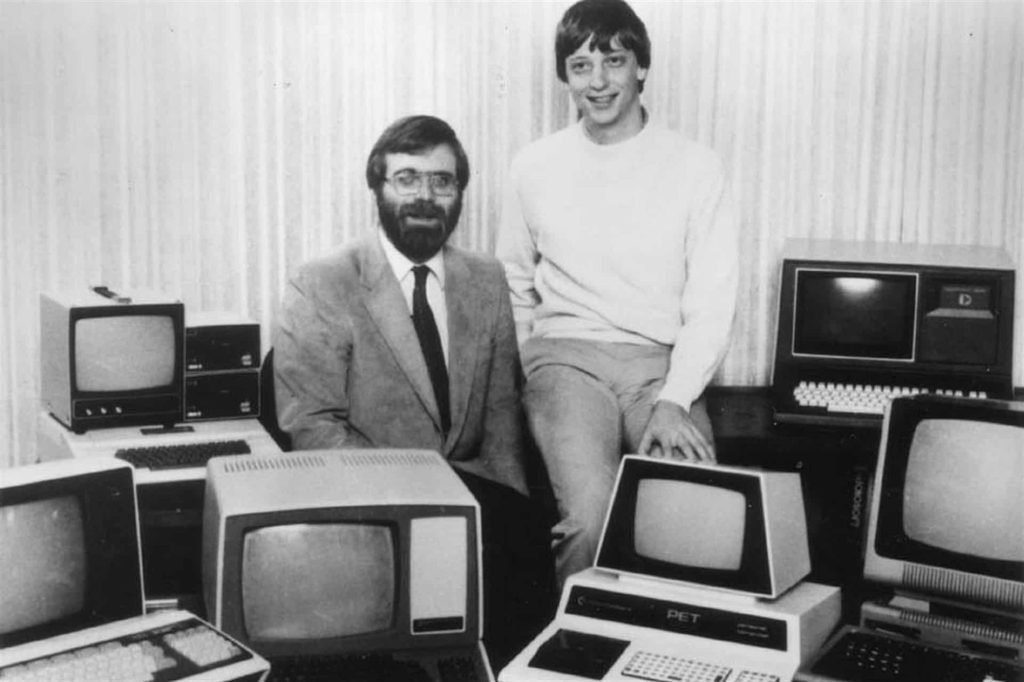
Bill Gates and Paul Allen
Allen left the company in 1983 after being diagnosed with Hodgkin’s disease. But he remained on the board of directors until 2000.
Their combined efforts resulted in a technological empire that has made both men billionaires. In fact, it etched their names in the Hall of Fame of the most influential figures in Tech.
2
Larry Page and Sergey Brin
Another iconic partnership that has significantly impacted the technological and information era is that of Larry Page and Sergey Brin, the co-founders of Google.
As Stanford University graduate students, they collaborated on a research project aimed at organizing the world’s information.
This project morphed into Google, a company that would redefine the way people access and utilize information on the internet.
The partnership was characterized by a harmonious blend of Page’s vision for large-scale technology solutions and Brin’s creativity and passion for data mining.
The duo’s innovative approach to search algorithms, embodied in Google’s PageRank system, revolutionized internet browsing.
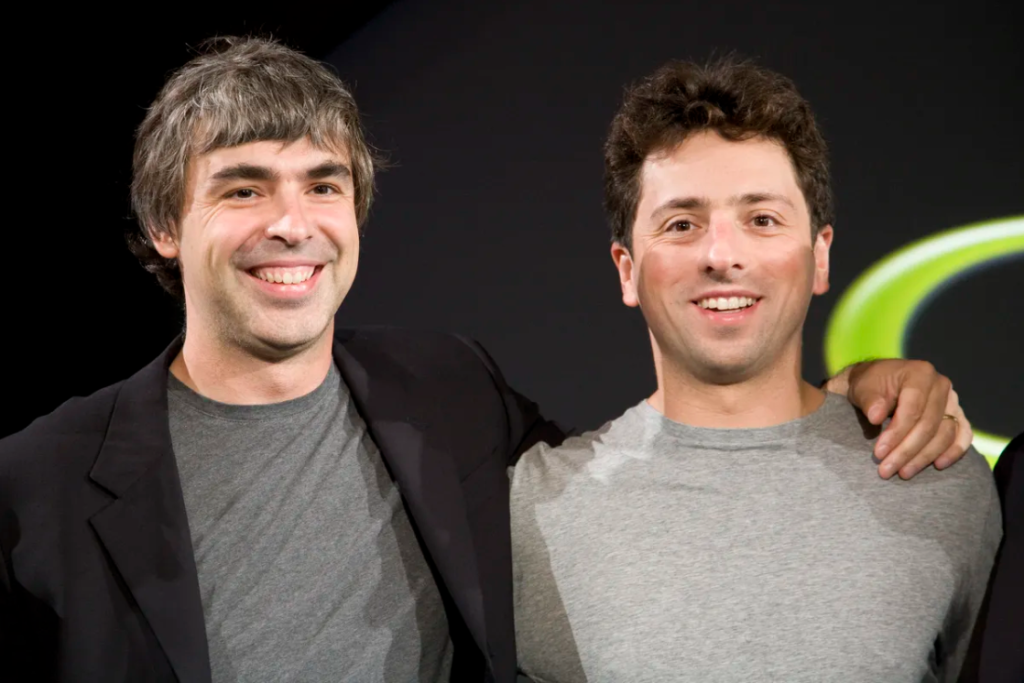
Larry Page and Sergey Brin
Their business relationship went beyond technology. Moreover, they worked together to make Google one of the most important tech companies in the world.
When Google went public in 2004, the partners became billionaires.
Even though they are no longer involved in day-to-day business, their memories are still deeply rooted in the company.
3
Steve Jobs, Steve Wozniak, and Ronald Wayne
The partnership of Steve Jobs, Steve Wozniak, and Ronald Wayne led to the creation of one of the most influential tech companies of the 21st century: Apple Inc.
Jobs and Wozniak, two high school friends with a shared passion for technology and innovation, joined forces with Wayne, a mutual acquaintance, to establish Apple in 1976.
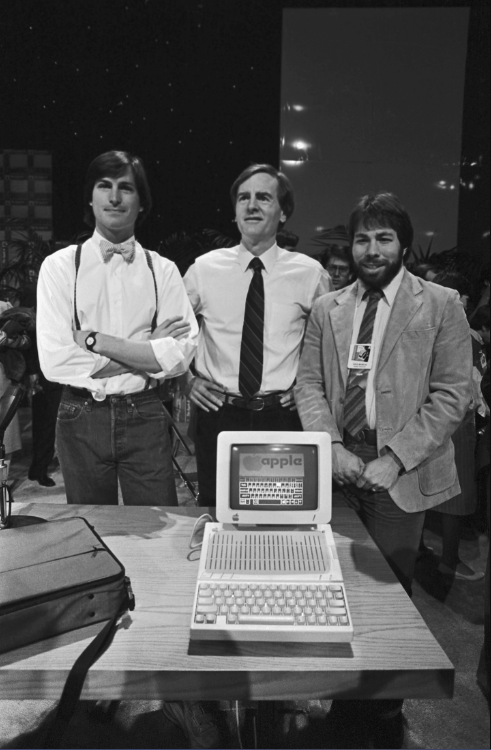
Steve Jobs, Steve Wozniak, and Ronald Wayne
Jobs brought business plans and marketing skills. Wozniak brought the technical know-how. Finally, Wayne brought his skills in running a business.
The Apple II was the company’s first big hit. It was a personal computer that made the idea of a PC popular among regular people.
The partnership had to deal with its own problems. Wayne sold his share of the company just a few weeks after it was formed. In the 1980s, Jobs was fired from Apple.
But Jobs’s return to the company in the late 1990s and the release of groundbreaking goods like the iMac, iPod, iPhone, and iPad cemented Apple’s place in the history of technology.
Jobs and Wozniak both became rich because of the deal they made. In fact, it changed the future of personal computers and consumer gadgets in a way that can’t be undone.
4
Larry Ellison, Bob Miner, and Ed Oates
The three visionaries, Larry Ellison, Bob Miner, and Ed Oates, have carved an indelible mark on the world of enterprise software through the creation of Oracle Corporation.
Founded in 1977, Oracle was the result of a grand vision shared by Ellison, Miner, and Oates, aimed at creating a comprehensive suite of software services for businesses.
Larry Ellison, serving as the company’s CEO for several decades, has been the most public face of the trio, often in the limelight for his competitive spirit and flamboyant style.
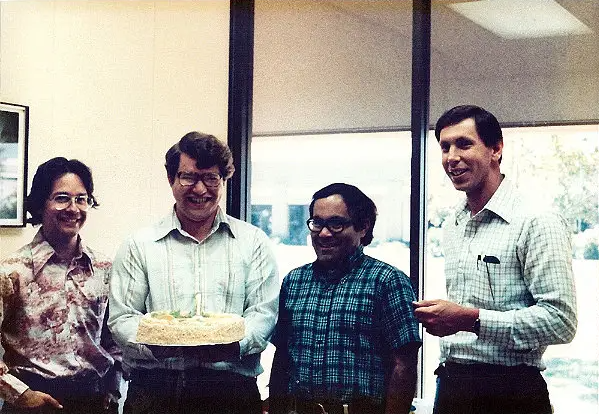
Larry Ellison, Bob Miner, and Ed Oates – Founders of Oracle
Under the direction of these three people, Oracle has grown by leaps and bounds, becoming a major player in the IT business around the world.
Oracle’s relational database product, which set the bar for data management, is a big reason for its success.
Even now, Oracle’s solutions are still a key part of the IT infrastructures of many companies around the world.
This partnership between Ellison, Miner, and Oates was so good that it changed the way businesses work. Even more so, this deal made them billionaires in the process.
5
Henry Ford and Alexander Y. Malcomson
Henry Ford and Alexander Malcomson’s story is an important part of the history of cars.
Not only did this deal make Ford a billionaire, but it influenced the auto industry for centuries to come.
In 1902, they started a business together called Ford and Malcomson, Ltd., which was the beginning of what we now know as the huge Ford Motor Company.
Ford’s great engineering skills and Malcomson’s creativity and drive to start his own business were the main reasons for the relationship.
At first, the two men had to deal with a lot of financial problems, but their drive to keep coming up with new ideas changed the car business.
Their story is a testament to the strength of a strategic alliance and the power of a shared vision.
Ford and Malcomson introduced the world to the Model T car in 1908, and in doing so, they not only unlocked unprecedented wealth but also laid the foundation for the modern automotive industry.
Ford’s innovative assembly line drastically reduced the cost of production, making cars accessible to the masses.
Though Malcomson eventually exited the company, both he and Ford were able to amass considerable wealth due to their joint venture.
6
Bill Hewlett and Dave Packard
Bill Hewlett and Dave Packard started Hewlett-Packard in a small garage in Palo Alto, California, in 1939. They did this for only $538.
Today, many people think of Palo Alto as the place where Silicon Valley began.
Their first product, an audio oscillator, was a big hit right away. One of their first customers was Walt Disney.
Over time, their partnership led to the growth of a company that would become a tech giant and sell a wide range of goods, such as computers, printers, and software.
The way Hewlett-Packard ran their business together was unique.
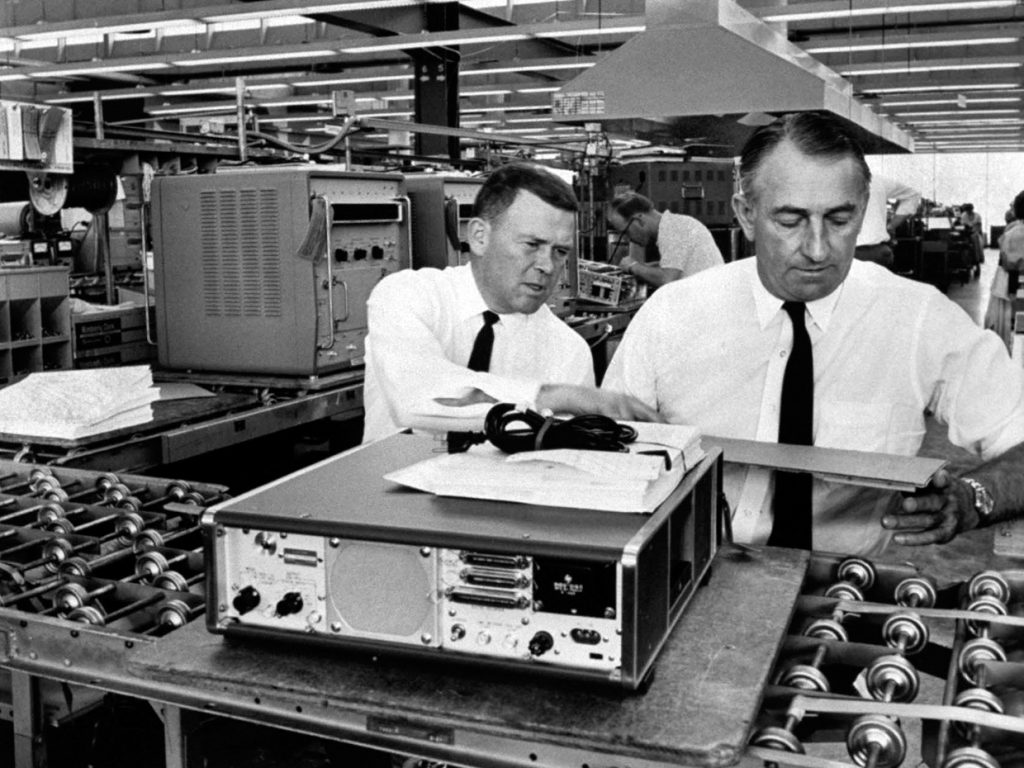
David A. Packard and William R. Hewlett
They pioneered the “HP Way,” a set of values and guidelines that focused on respect for employees, flexible work hours, and a commitment to product quality.
This company’s culture was so creative that it was ahead of its time. It influenced a lot of other tech companies and helped give Silicon Valley its own personality.
This deal made both Hewlett and Packard billionaires from their businesses and will be remembered as tech pioneers for a long time.
Their partnership is a powerful example of how a shared goal, new ideas, and leadership based on morals can lead to great success.
7
Evan Spiegel and Bobby Murphy
Evan Spiegel and Bobby Murphy, two Stanford University students, started a business together in 2011 that would change the way people use social media.
Together, they came up with an idea for a photo-sharing app where the pictures would disappear after being looked at. This would be very different from most social media posts, which stay online forever.
At first, people didn’t like Spiegel and Murphy’s new idea, but they didn’t give up.
Their creation, Snapchat, allowed users to share fleeting moments of their lives.
Snapchat’s success did not happen overnight, but Spiegel and Murphy’s steadfast belief in their product paid off handsomely.
By 2012, less than a year after launch, the app was processing over 20 million photos a day.
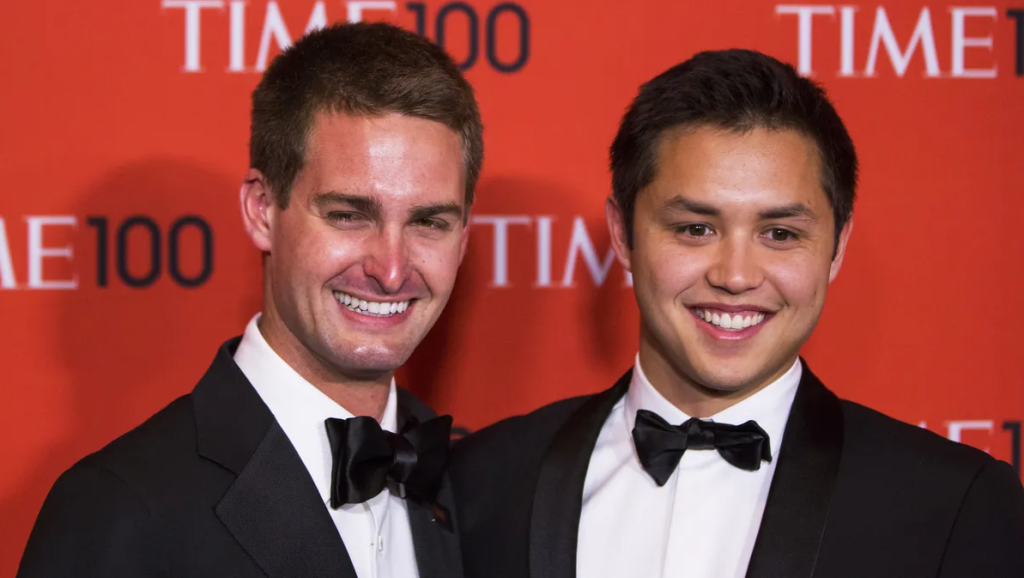
Evan Spiegel and Bobby Murphy – Snapchat
Today, with over 350 million active users, Snapchat is one of the most popular social media platforms worldwide.
It’s safe to say this deal made both Evan and Bobby billionaires. In fact, they demonstrated the immense value of a truly innovative idea and the determination to bring it to fruition.
8
Jerry Yang and David Filo
In 1994, electrical engineering graduate students Jerry Yang and David Filo created a website named “Jerry and David’s Guide to the World Wide Web” as a hobby.
The website was a directory of other websites, organized in a hierarchy as opposed to a searchable index of pages.
Seeing the potential of their creation, Yang and Filo co-founded Yahoo!, a web services provider that would become one of the pillars of the early internet.
Yahoo!, an acronym for “Yet Another Hierarchically Organized Oracle”, became the front door to the internet for millions of users in the 1990s and early 2000s.
Its suite of web services, including email, search, and news, made it a leader in the digital world.
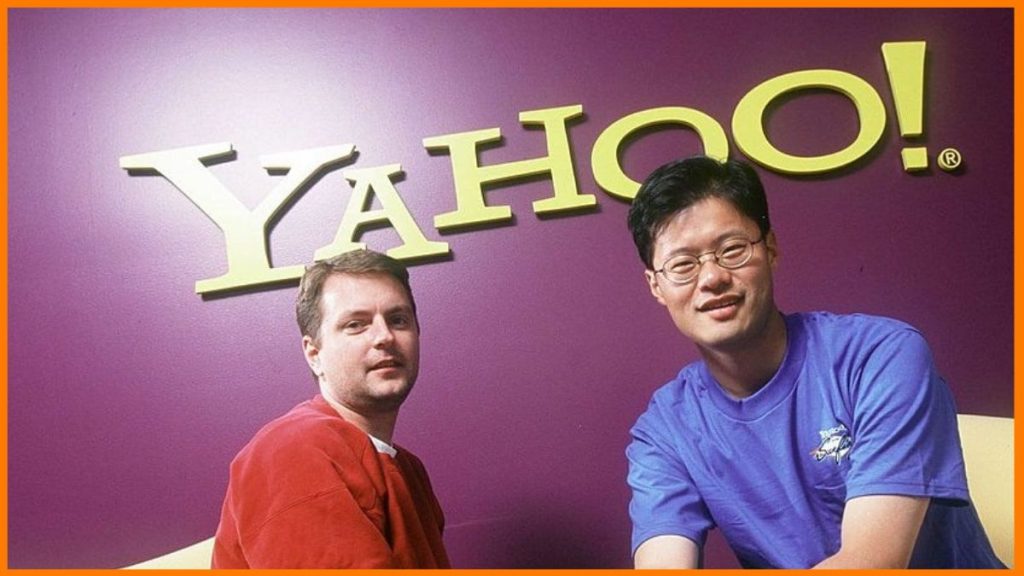
Jerry Yang and David Filo
Despite the intense competition and the company’s eventual decline, Yahoo! stands as a testament to the pioneering spirit of Yang and Filo.
Their partnership led to a tech company that, at its peak, was worth over $125B. In conclusion, this deal made both Yang and Filo billionaires.
9
Mike Lazaridis and Douglas Fregin
Mike Lazaridis and Douglas Fregin, who had known each other since they were kids, started Research In Motion (RIM) in 1984 with just $15,000.
The two Canadians first worked on making technology for changing movies and sending data wirelessly, which was a long time before smartphones.
But their deals in mobile messaging are what made them billionaires.
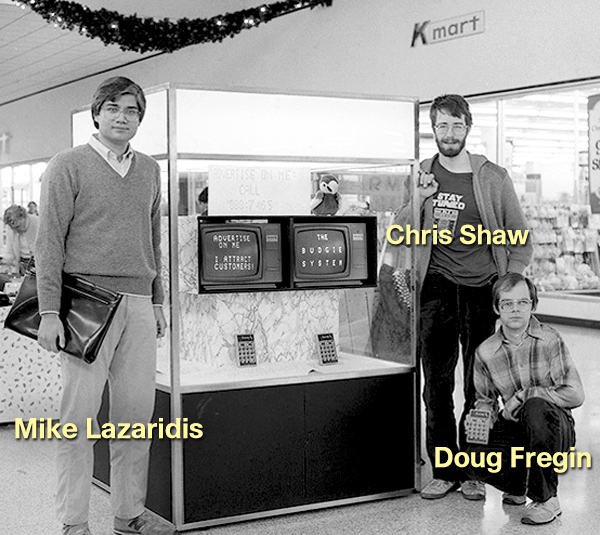
Mike Lazaridis and Douglas Fregin
In 1999, RIM introduced the BlackBerry, a pager-like device that was one of the first to integrate email and data services.
The BlackBerry soon evolved into a full-fledged smartphone and became the device of choice for business professionals worldwide.
At its peak, RIM controlled over half of the US smartphone market.
Although the company, now known as BlackBerry Ltd., has since lost its dominant position due to competition from Apple and Android devices, the partnership of Lazaridis and Fregin brought about a revolution in mobile communications.
10
Brian Chesky, Joe Gebbia, and Nathan Blecharczyk
In 2008, the world saw the emergence of a disruptive startup named Airbnb, founded by Brian Chesky, Joe Gebbia, and Nathan Blecharczyk.
These three visionary individuals managed to take the simple idea of renting out an air mattress in their living room and turn it into a global phenomenon.
Firstly, Chesky and Gebbia are both graduates of the Rhode Island School of Design.
They initially created the concept as a means to offset the high rent in San Francisco, whereas Blecharczyk, a Harvard University graduate and seasoned engineer, came on board to lead the technical side.
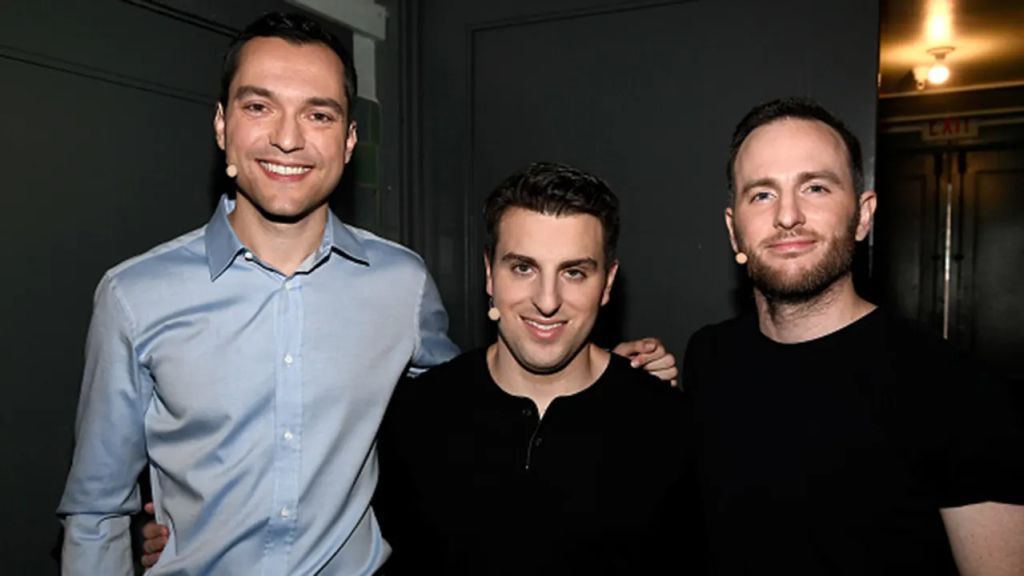
Brian Chesky, Joe Gebbia, and Nathan Blecharczyk
Their partnership proved fruitful, as Airbnb disrupted the hospitality industry by providing a platform for people to rent out their homes to travelers.
Chesky as the CEO while is Gebbia focusing on the design, and Blecharczyk oversees the technical aspects, the trio’s complementary skills set the stage for Airbnb’s rapid growth.
Following several rounds of funding and explosive growth, their innovative idea, coupled with a keen business sense, catapulted all three founders into the billionaire club.
11
Pierre Omidyar and Jeff Skoll
Pierre Omidyar and Jeff Skoll, who were the main people behind eBay, changed e-commerce in a big way.
In 1995, Omidyar, a computer programmer, started AuctionWeb as a side project. This was the first site like eBay.
It was a unique place where people could bid on sales for a wide range of things.
Skoll, who has an MBA from Stanford, was brought on by Omidyar because he saw the platform’s promise.
He is the company’s first full-time employee and president. His job is to plan and manage the growth of the business.
Their deal proved to be enough to make both of them billionaires.
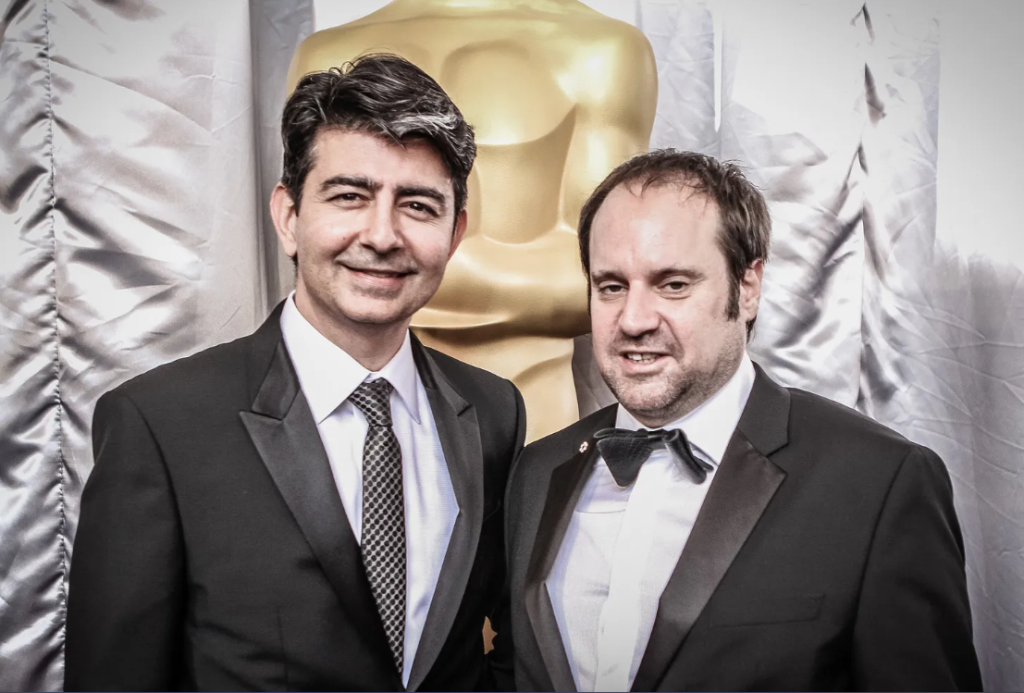
Pierre Omidyar and Jeff Skoll
Omidyar, as the visionary technologist, and Skoll, as the strategic entrepreneur, drove eBay to its current status as a global e-commerce powerhouse.
Skoll was instrumental in shaping eBay’s philanthropic side by establishing the eBay Foundation.
Their hard work and vision helped eBay grow at an unprecedented rate.
The company’s successful IPO in 1998 turned Omidyar and Skoll into billionaires, marking a significant milestone in the history of e-commerce.
12
Jan Koum and Brian Acton
In 2009, two former Yahoo employees, Jan Koum and Brian Acton, decided to embark on a new venture together.
They founded WhatsApp, a messaging app that was simple, fast, and ad-free.
The idea was born out of Koum’s frustration with missing calls and messages while he was at the gym.
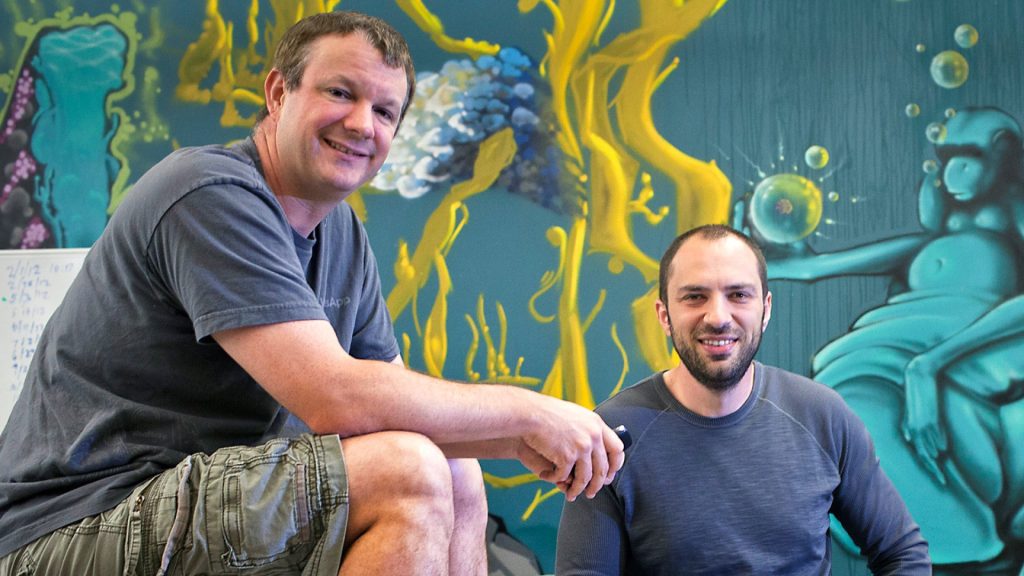
Jan Koum and Brian Acton
They made the app so that it shows states like “Battery about to die” or “At the gym” next to the names of people in the user’s network.
The app quickly became famous because it was easy to use, worked well, and respected user privacy.
After just a few years, WhatsApp had hundreds of millions of users all over the world.
This fast growth got the interest of Facebook, which bought WhatsApp for $19 billion in 2014, making it one of the biggest tech deals ever.
This huge deal not only made Koum and Acton billionaires but also confirmed WhatsApp’s place in the tech world.
13
Chad Hurley, Steve Chen, and Jawed Karim
Chad Hurley, Steve Chen, and Jawed Karim, three former PayPal employees, co-founded YouTube, a video-sharing platform that has revolutionized how people consume digital content.
This trio identified a gap in the market where a platform for uploading and sharing video content was lacking.
The venture was nothing short of transformative, offering users an unprecedented opportunity to create, share, and view a variety of video content, from home videos and vlogs to music videos and news clips.
The popularity of YouTube surged, and its user base expanded rapidly.
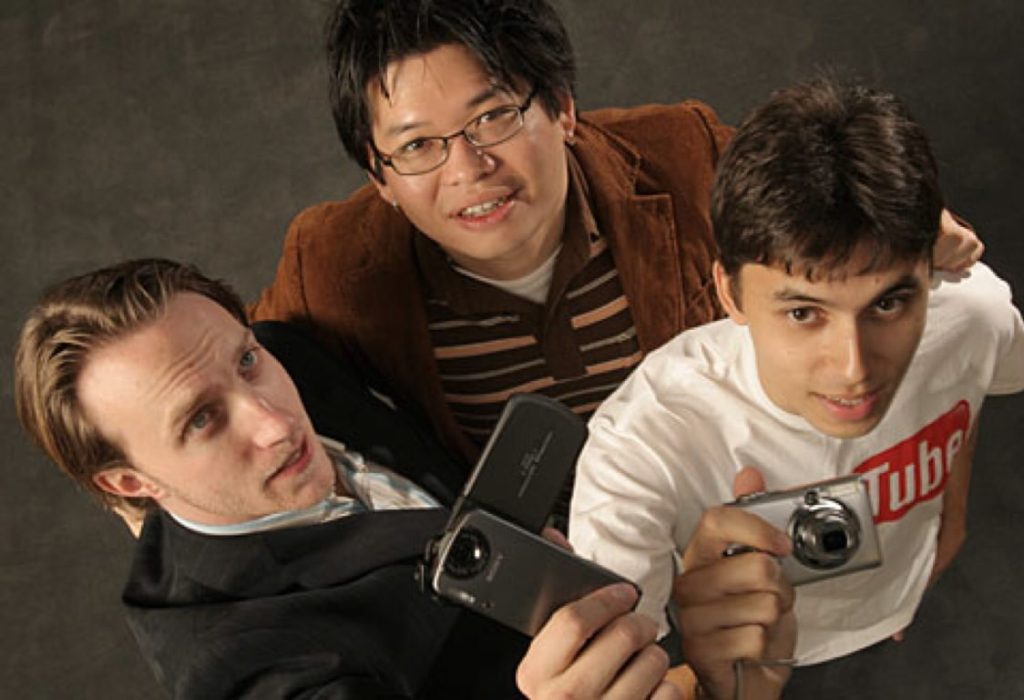
Chad Hurley, Steve Chen, and Jawed Karim
In November 2006, just a year after YouTube’s creation, Google acquired the platform for a staggering $1.65 billion in stock.
This deal was monumental, marking one of the largest tech acquisitions at the time. It not only validated the potential of user-generated content but also led to the creation of new billionaires.
Hurley, Chen, and Karim’s entrepreneurial success stories illustrate how innovative digital platforms can disrupt traditional media landscapes and create enormous wealth.
14
Andrew Houston and Arash Ferdowsi
In 2007, Andrew Houston and Arash Ferdowsi co-founded Dropbox, a cloud-based file-hosting service that would go on to change how individuals and organizations store and share files.
Recognizing the limitations of physical storage devices and the need for easy access to files from multiple locations, Houston and Ferdowsi embarked on the journey to create Dropbox.
The platform enabled users to upload and sync their files across devices, providing secure and convenient digital storage solutions.
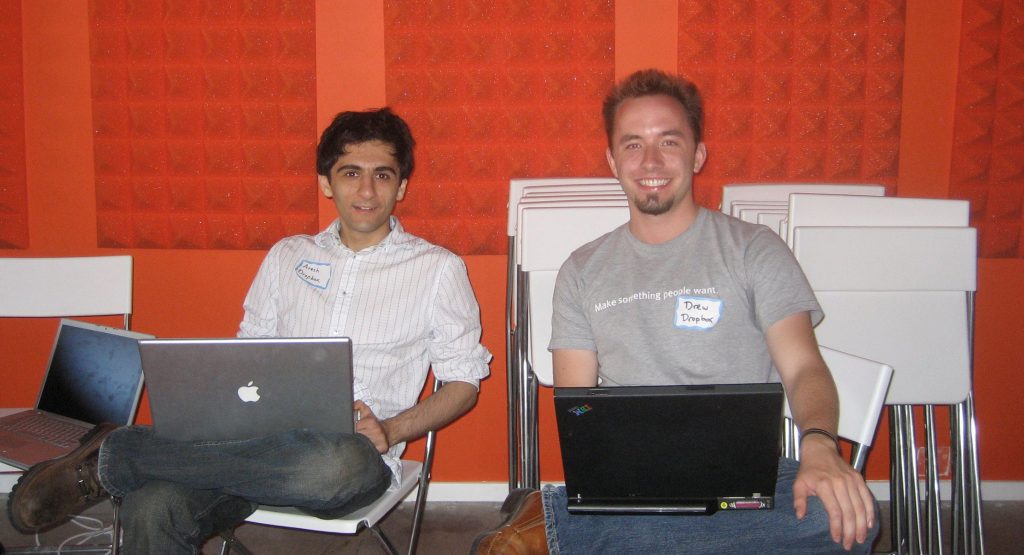
Andrew Houston and Arash Ferdowsi
The company’s success culminated in its initial public offering in 2018, which further boosted the co-founders’ wealth and solidified their status as billionaires.
The Dropbox co-founders’ story demonstrates the potential of technology to improve daily life efficiencies and the vast fortunes that can be built in the digital era.
Their journey offers a case study in identifying consumer pain points and creating a solution that caters to the global market.
15
Daniel Ek and Martin Lorentzon
Daniel Ek and Martin Lorentzon co-founded Spotify, a music streaming service, in 2006, forever changing how people around the world access and enjoy music.
Their shared vision to combat music piracy while providing an engaging platform for users led to the creation of Spotify.
The company transformed the music industry by offering a vast library of songs to stream on-demand, making music more accessible and affordable.
Spotify’s 2018 public listing was unconventional, as it was a direct listing, meaning no new shares were issued or underwritten.
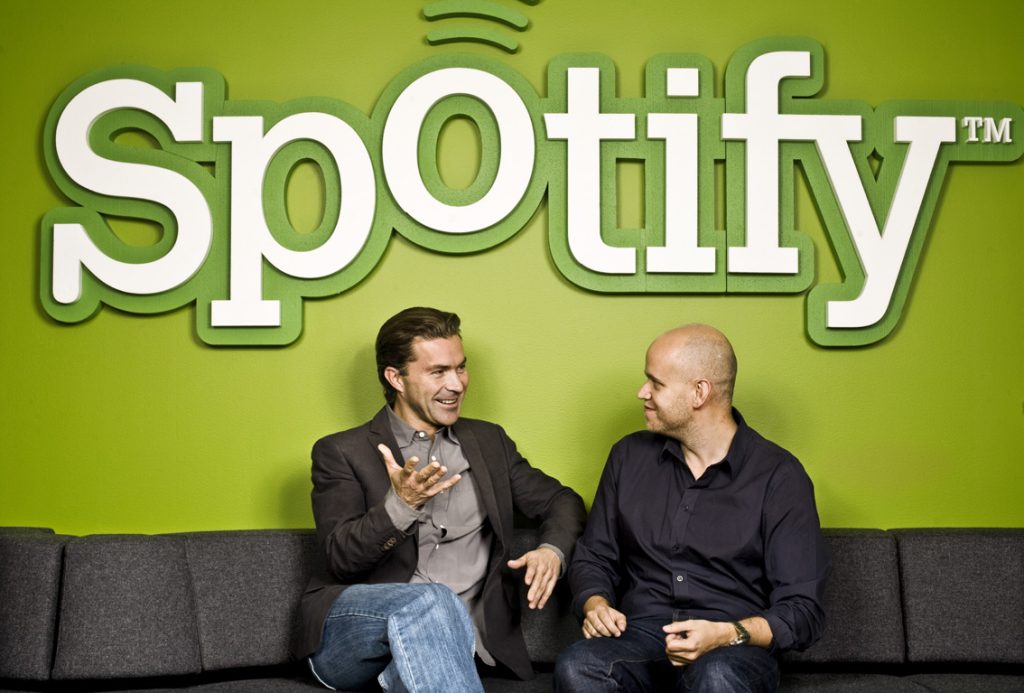
Daniel Ek and Martin Lorentzon
Instead, the shares that were already there were sold straight to the public.
Even though the listing was done in a non-traditional way, it worked and the company was valued at nearly $30 billion on its first day of trade.
With this listing, Ek and Lorentzon became billionaires.
The success of Spotify shows how innovation can change businesses and how shaking up old ways of doing things can lead to a lot of money.
In conclusion, many of these deals that made billionaires are in the tech space. But there are a few more industries where billionaires are made. Check this article out if you enjoyed this one! See you next time!


